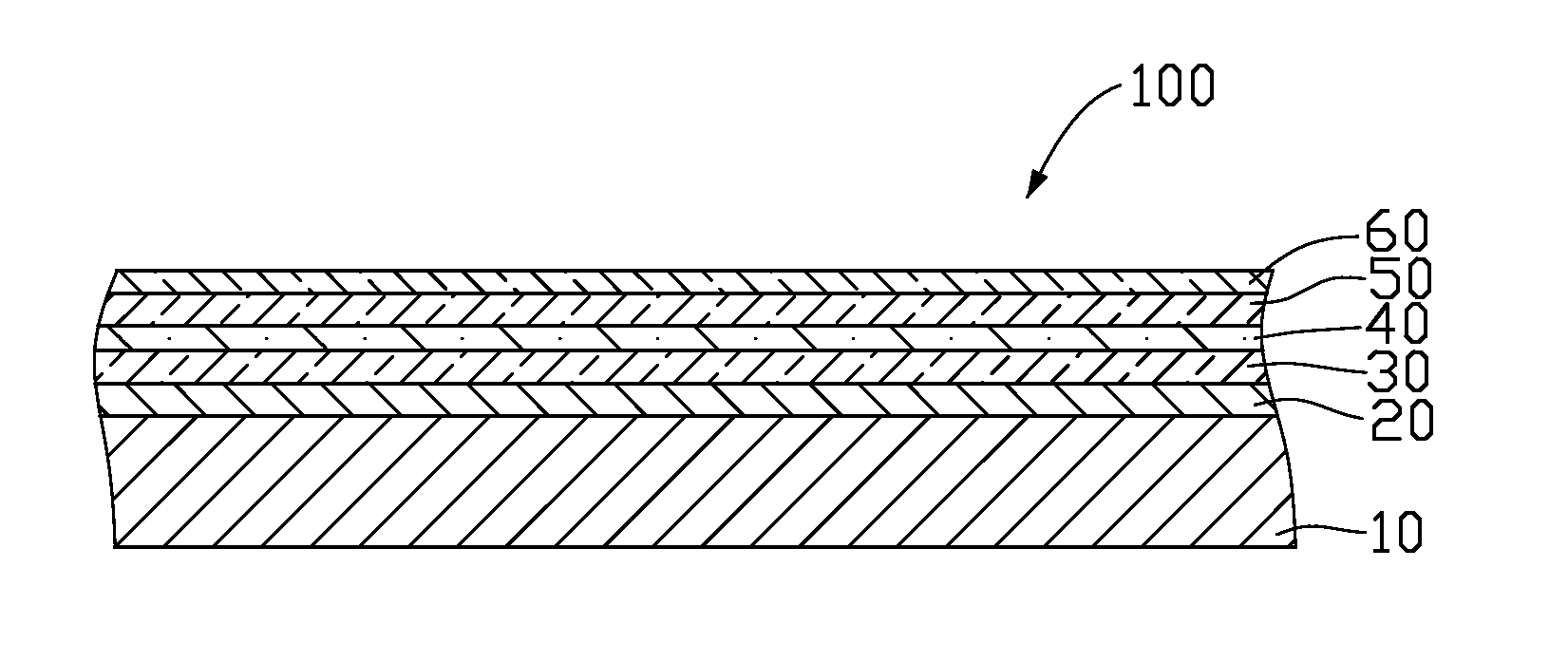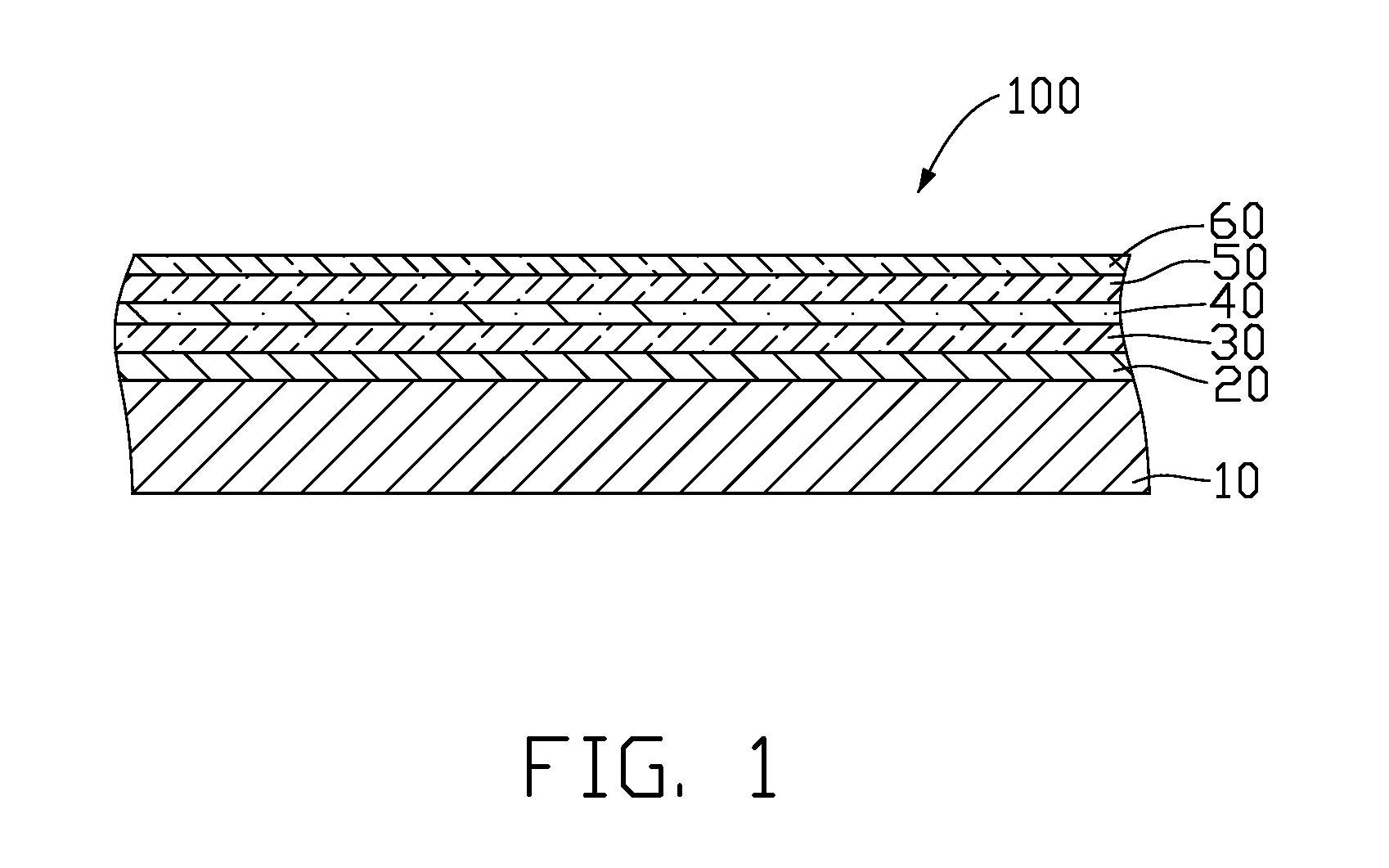Solar cell
a solar cell and cell technology, applied in the field of solar cells, can solve the problems of difficult to improve the efficiency of photon-electron conversion and difficult to reduce the cost of silicon-based materials
- Summary
- Abstract
- Description
- Claims
- Application Information
AI Technical Summary
Benefits of technology
Problems solved by technology
Method used
Image
Examples
Embodiment Construction
[0012]Embodiments of the present solar cell will now be described in detail below and with reference to the drawing.
[0013]Referring to the drawing, an exemplary solar cell 100 is shown. The solar cell 100 includes a substrate 10, a back metal-contact layer 20, a P-type semiconductor layer 30, a P-N junction layer 40, an N-type semiconductor layer 50 and a transparent electrically conductive layer 60.
[0014]The substrate 10 can be rigid or flexible according to need. A material of the substrate 10 can be selected from glass, ceramic, plastic and stainless steel.
[0015]The back metal-contact layer 20 is comprised of a material selected from silver, copper, molybdenum, aluminum, copper aluminum alloy, silver copper alloy, and copper molybdenum alloy. The back metal-contact layer 20 is formed on the substrate 10 by DC magnetron sputtering.
[0016]The P-type semiconductor layer 30 is comprised of nano particles of a P-type semi-conductive compound. The P-type semi-conductive compound can be ...
PUM
 Login to View More
Login to View More Abstract
Description
Claims
Application Information
 Login to View More
Login to View More - R&D
- Intellectual Property
- Life Sciences
- Materials
- Tech Scout
- Unparalleled Data Quality
- Higher Quality Content
- 60% Fewer Hallucinations
Browse by: Latest US Patents, China's latest patents, Technical Efficacy Thesaurus, Application Domain, Technology Topic, Popular Technical Reports.
© 2025 PatSnap. All rights reserved.Legal|Privacy policy|Modern Slavery Act Transparency Statement|Sitemap|About US| Contact US: help@patsnap.com


